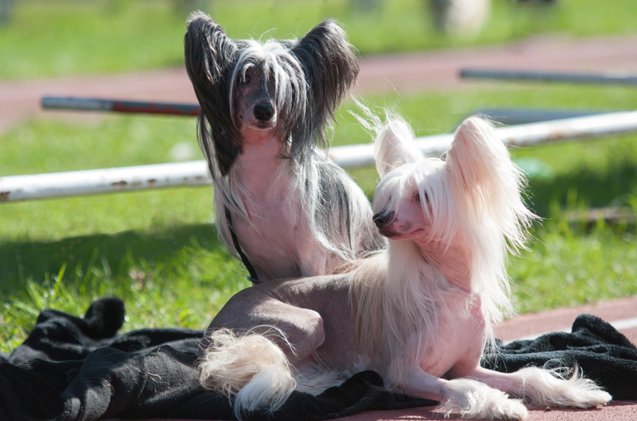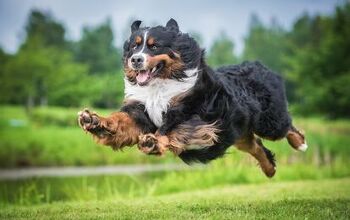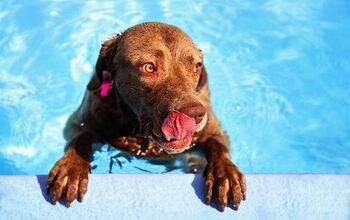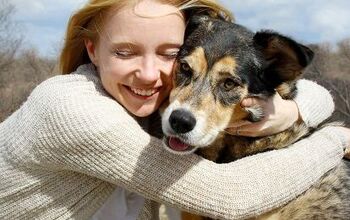Top 10 Non-Shedding Dog Breeds

We’ve got to come clean with you. Truthfully, there’s no such thing as a non-shedding dog. Even dogs with hair lose it on occasion (just like people) – which explains the furry tumbleweeds that congregate under my couch. But there are dogs that shed way less than others. In fact, it may seem like they don’t shed at all.
Like we said…there really isn’t such a thing as a non-shedding dog, but the concern about dogs and shedding usually stems more from concern about allergy than it does tumbleweeds through the hallways (though we have to admit, lots of dog parents would prefer less of that, thank.you.very.much!).
What people are really allergic to is not so much the dog hair or fur, though. It’s the dog dander (dead skin that flakes off your dog) or their saliva. Or their urine. Eww. Yes, we said their urine.
See, dog hair gets a bad rap as an allergen, but what really happens is that the real allergens (saliva, dander and urine) end up getting carried through to household items and humans in the home on the dog’s hair. So, when a dog ‘sheds’ it’s fur/hair, that shed is the carrier for the real allergy causers.
And thus–all the bad press about allergies.
So, what do experts recommend if you love Fido but sneeze at the thought of him? Well, first, you can find a dog that doesn’t shed (as much). Conveniently, you’re in the right place for that.
Second, you can make sure you’re keeping your dog groomed well to remove dander, and consider a smaller dog so that the shedding that may happen is less.
Keep in mind, when looking for a ‘hypoallergenic dog’, what you’re really looking for is a dog with whom you’ll likely see the least amount of shedding of fur or hair. ‘Hypoallergenic’ means that the dog is less likely to stimulate your allergic reactions, and that is typically because it’s a dog that sheds nearly none (or less than the average dog).
And that Top 10 list of non-shedding dog breeds is right here!
Puli: Sporting a Rastafarian look, the Puli’s long dreads are corded, which can take years to fully develop. Once they do, you won’t have to brush and they won’t shed. But the dreads do take some skill to properly cord, so ask an expert or groomer on how to properly achieve this look. You can still give them a bath, but it’ll take a few days for those dreads to dry out. (Photo Credit: WilleeCole/Shutterstock)
Yorkshire Terrier: With a long, luxurious coat, it’s surprising to learn that the Yorkie’s coat doesn’t shed very much. The Yorkshire Terrier’s has hair rather than fur, so this is one reason this breed’s shedding is kept to a minimum. To keep it looking its best, it does require daily brushing to keep mats and tangles at bay. (Photo Credit: Eric Isselee/Shutterstock)
Bouvier des Flandres: A great dog for allergy sufferers, the Bouvier des Flanders shed little of its fur. But be prepared for a lot of upkeep. This dog is double-coated and has a tousled appearance. You’ll need to brush a few times a week and take him to the groomers every couple of months for a trim. (Photo Credit: Erik Lam/Shutterstock)
Xoloitzcuintli: Naked is beautiful! And the Xoloitzcuintli can really pull this look off. Many are completely hairless, while others wear a light coat or just a Mohawk. And whether you get the hairless or the powder-puff version, this breed comes in a range of different colors. (Photo Credit: ©iStock.com/alkir)
Poodle: There’s a reason why so many hybrid dog include the Poodle into the mix. Its curly coat rarely sheds, but you’ll have to keep on top of grooming requirements. They need to be bathed and clipped regularly, so expect frequent trips to the groomers. But the upside of a Poodle’s coat is that you can have it styled in countless different ways. (Photo Credit: Eric Isselee/Shutterstock)
Shih Tzu: With a likeness to a little lion, the Shih Tzu’s long coat of hair is ideal for allergy sufferers, but not so great for those who dislike grooming. This dog sheds little of its hair, although you’ll need to brush it on a daily basis. (Photo Credit: Nagel Photography/Shutterstock)
Bedlington Terrier: He may look like a sheep, but the Bedington Terrier’s coat is anything but baaaaaad for those who don’t want a dog that sheds. It’s coat is both soft and wiry, and only needs to be bushed about once a week, although you will need to take him to the groomers once every two months to get him clipped. (Photo Credit: ccho/Flickr)
Soft Coated Wheaten Terrier: Soft and low shedding – yep, the Soft Coated Wheaten Terrier boasts both of those characteristics. To ensure that its coat doesn’t shed much, you’ll have to brush and take good care of his silky coat. (Photo Credit: Eric Isselee/Shutterstock)
Chinese Crested: Nearly nude, the Chinese Crested dog sports a bit of fluff on his head, paws and tail. There are also powder-puff versions of these breed, but both are low shedders. If you like your dogs naked, there’s not much grooming or vacuuming involved with the hairless Chinese Crested. (Photo Credit: Eric Isselee/Shutterstock)
Bichon Frise: White and fluffy, the Bichon Frise also boasts a shed-free coat. And as expected with a coat like this, you’ll have to keep on top of it to ensure it looks its best and remains off your furniture. Groom him frequently and give him a bath and clipping every month or so. (Photo Credit: Viorel Sima/Shutterstock)

Amy Tokic, Editor of PetGuide.com, is a passionate animal lover and proud pet parent of Oscar, a Shih Tzu/Chihuahua cross, and Zed, a Japanese Chin. Her love of animals began in kindergarten, when she brought her stuffed dog Snoopy into class with her every day. Now, she writes about her adventures in pet ownership and tirelessly researches products, news and health related issues she can share with other animal enthusiasts. In her free time, Amy loves perusing used book and record stores, obsessing over the latest pet products available and chasing squirrels with wild abandon (a habit attributed to spending too much time with her pooches).
More by Amy Tokic


































